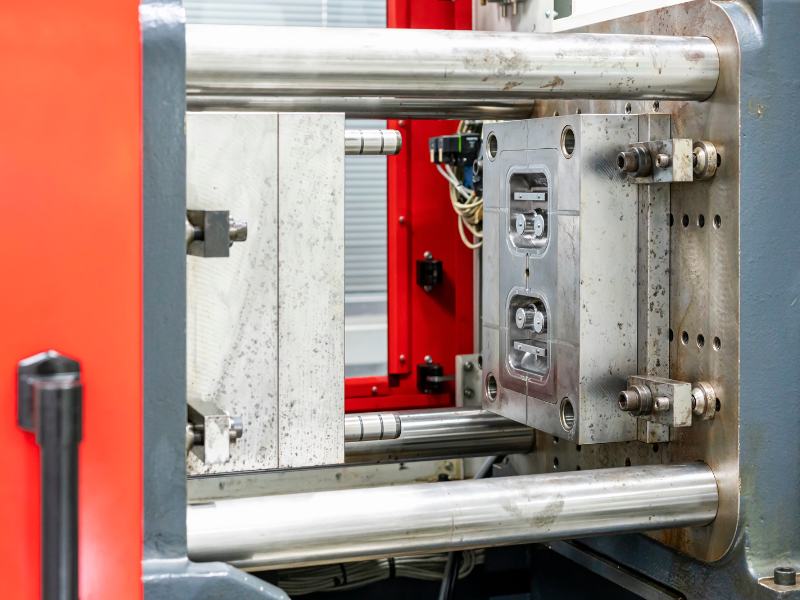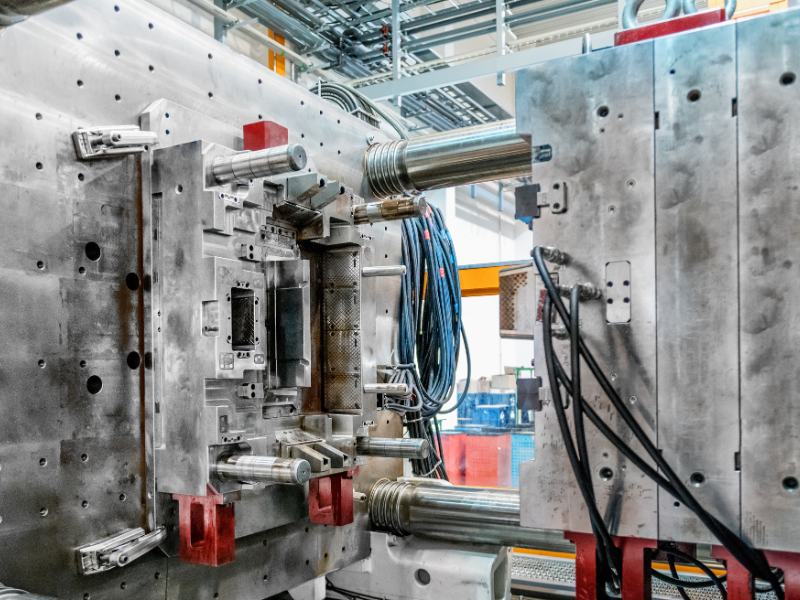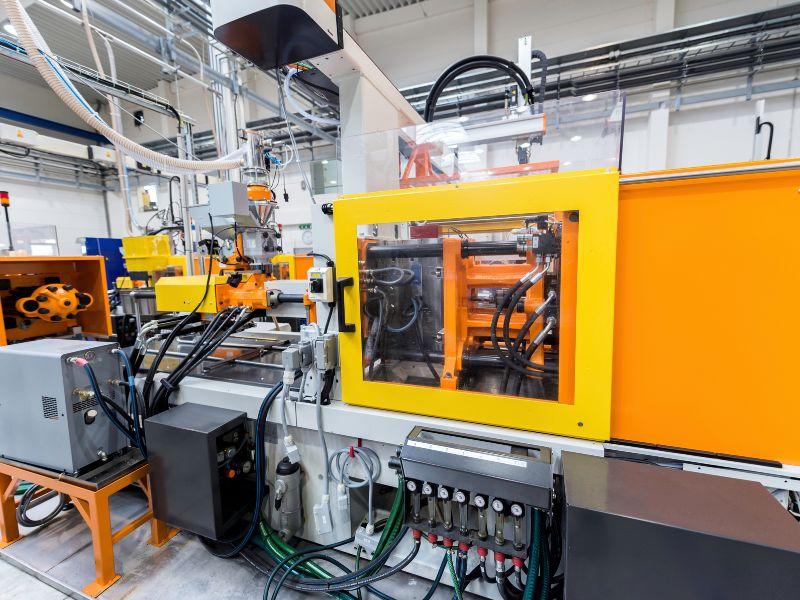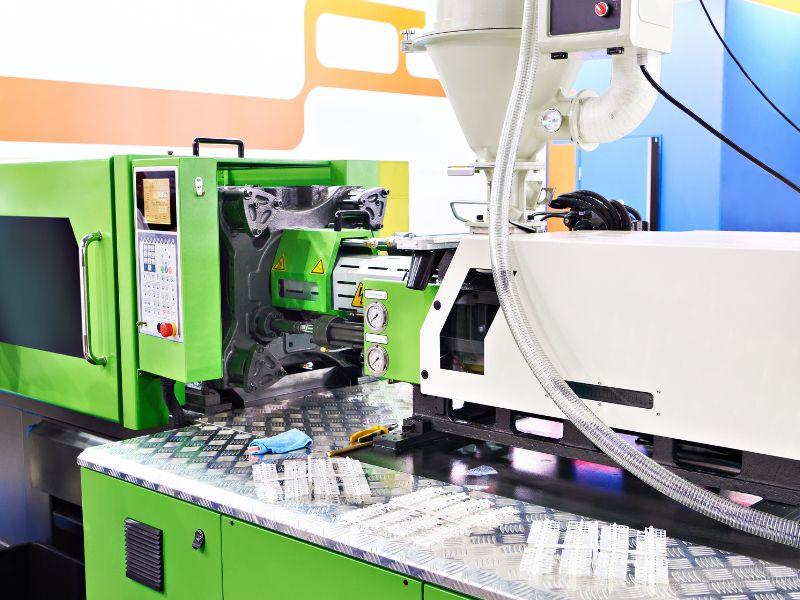In plastic fabrication, Gas-assisted molding has gained significant attention due to its cost-effectiveness. It has now become a developed technology that is widely used in the molding of intricate detail parts to meet exact specifications. Unlike conventional molding techniques, where resins or polymers are used, gas-assisted molding is typically exploited by using pure nitrogen up to 98% purity in an inert form. This injection of gas forces some of the plastic material to leave the finished product with voids in its structure. Additionally, low costs on material, a short turnaround of part formation, and manufacturing lightweight yet string parts are some of its core features.
Keep reading this blog post because this article entails thorough details about gas assist injection molding, its uses, parts made out of this enormous technique, and so much more to know.
Gas Assisted Injection Molding: A Brief Overview
Gas-assisted injection molding follows the same sequence as conventional molding. Typically, the mold is filled 70 to 80% with molten plastic, which entails the pre-defined shape of intended parts or products. The remaining volume of the mold is filled by pure N2 gas to avoid void formation in molded products. This technique is beneficial for optimally producing parts with tight dimensions and smooth surface finishes. In addition, the risks of warping and distortion are minimal in gas-assisted injection molding techniques.
Common Types of Gas Assist Injection Molding
Usually, product manufacturers employ two types of gas-assisted injection molding techniques: internal and external. Each type has a three-step workflow that is different from the others. the detailed procedure is outlined below.
Internal Gas Assist Molding
Let’s discuss its working mechanism;
- First, pour the molten plastic into the mold using channels.
- Then, blow high pressure inert gas, usually nitrogen (98% of purity), to form a bubble in the melted plastic.
- Lastly, the force exerted by the gas on the plastic forces it to take the shape of the mold in forming the part.
This method is advantageous when designing geometries with thin walls and a relatively low density. The gas’s pressure is constant, preventing the walls from shrinking or distorting, thus ensuring that thin-walled structures are accurately formed. Therefore, this process is best suited for the production of thin-walled parts.
Also, production cycle times are notably shorter than external gas-assisted injection molding. The parts’ thin sections or hollow areas help them cool faster than solid ones.
External Gas Assist Molding
Let’s discuss its principle of working;
- Unlike other materials, the gas does not get inside the material to form voids or channels.
- It enters the mold through small channels on one side only while the other is exposed.
- The gas pressure forces the melted resin to contact the mold walls from the side of the part that is not visible from the aesthetic point of view.
This approach is particularly famous for the high quality of surface finish that can be accomplished.
Moreover, this technique is very efficient in dealing with parts with large surface areas and intricate curved surfaces. The gas channels are arranged in parallel along the entire surface, which makes it easier to apply pressure and fabricate large surface areas with complex shapes.
Gas Type used in the gas-assisted injection molding?
Nitrogen is a widely available inert gas used for molding products. It does not affect plastics and maintains their characteristics and appearance. Pressure is used to spread the material properly and minimize the use of plastic resin.
Materials Used in Gas Assist Injection Molding:
Common material types include;
Acrylonitrile Butadiene Styrene (ABS):
ABS is tough, resilient, and low-density, which makes it ideal for use in various fields. It is widely used in car spare parts, protective casing, and other products. However, in some cases, it can transform, that is, deform.
High-Density Polyethylene (HDPE):
HDPE is selected because of its superior weather ability, chemical ability, and toughness, which is ideal for outdoor use and exposure to various environmental conditions. However, it may possess lower stiffness compared to other materials used to construct various structures.
Polypropylene (PP):
Polypropylene is famous for its chemical inertness. It is also a poor conductor of electricity, has high tensile strength, and has a high melting point, so it is strong and can support heavy loads. However, it loses some of its properties if exposed to direct sunlight, so it is not suitable for use in outdoor conditions.
Polycarbonate (PC):
Polycarbonate is selected for its resistance to impact and is hence suitable for car parts and safety equipment. It is also very durable and does not degrade in strength even under high temperatures. However, polycarbonate is a relatively costly material compared to other engineered-grade thermoplastics.
High Impact Polystyrene (HIPS):
HIPS plays a significant role in meeting impact strengths requirements. It imparts dimensional stability and scaleability in gas assisted injection molded products. Moreover, machining HIPs is typically easy. Comparable to other engineering-grade materials. HIPS has high thermal characteristics and can endure harsh conditions. Mostly, its utility is higher in marine applications.
Pros of Gas Assist Injection Molding:
Gas-assisted injection molding helps replicate parts in precise and accurate dimensions. It also reduces the cycle time of the process and increases production rates and the efficiency of the entire process. Also, gas-assisted molding helps prevent surface defects, which improves the aesthetic look and feel of the parts. Moreover, It minimizes warpage, sink marks, and internal stresses detrimental to part performance, quality, and longevity. The process is economical in the sense that it uses less material, this is because of the hollow sections. More to the point, gas assist molding offers high strength and stiffness and low weight, and therefore a high strength-to-weight ratio.
Cons of Gas Assist Injection Molding:
Although it is beneficial for large-scale production runs, some issues can be encountered in gas-assist molding, particularly when multiple cavities are involved in different sizes for part formation. Thus, problems in one cavity may require the removal of the whole mold while other cavities remain unused, therefore lowering productivity and tending to incur more expense on the project. Also, this molding technique is more elaborate than the others. It requires special equipment and skills to be applied, so it is expensive. Other design constraints may also be attributed to the need to channel and vent the gas, which may limit the design and may have to be manipulated to achieve the best outcome.
What are Some Product Examples Made By Gas Assisted Injection Molding?
Gas-assist injection molding is widely used to create thin-walled symmetrical prototypes and cylindrical sections or voids by applying a high pressure of around 35 MPa to 70 MPa along with an inert gas (typically nitrogen of 98% purity). It is commonly used in many products in different industries. For instance, it produces chair arms, dashboard parts, and seat frames in the furniture and automobile industries. In the household appliance industry, gas-assist molding creates vacuum cleaner bodies and washing machine doors with complex shapes and the required rigidity.
This process is also applied to sports equipment, for instance, handles of tennis rackets and cores of baseball bats. In office and electronics applications, printer frames, monitor stands, and television frames are some of the products that can be produced using this molding technique since it can create intricate designs and minimize the use of material. Also, gas assist injection molding is used in the production of medical equipment such as walker frames and parts of wheelchairs while maintaining the strength and accuracy of the equipment. In the audio industry, speaker housings are produced with improved mechanical strength and appearance due to gas-assisted injection molding.

Are Gas Assist Injection Molding Products Strong and Reliable For Longer Term Use?
This process results in the formation of parts that are both light in weight and strong due to the formation of cavities that increase the stiffness of the structure while at the same time reducing the weight. These products are designed to offer good shock absorption and this makes them suitable for use in areas where strength is required.
How long does a product made by gas assist injection molding last?
The life expectancy of gas-assist injection-molded products depends on certain factors, such as the material type used, part design, and intended use—application of the part. If these products are used and maintained properly, they can last many years. The general life and service will vary depending on the application and the product type.
Gas Assist Injection Molding: Is It Expensive?
However, it is crucial to understand that gas assist injection molding is comparatively more costly than the other injection molding processes. The higher costs are due to the need to use special equipment, instruments, and qualified staff to perform the process.
Although there are some drawbacks, such as the machine tool’s higher initial cost than that of a conventional machine tool, the following benefits can be achieved: In addition, the efficiency of gas-assisted injection molding is influenced by factors like the product’s use and the volume of production.
Gas Assist Injection Molding & Reaction Injection Molding: Key Differences
GAIM and RIM are two different processes of molding. GAIM is a process of injecting the plastic material along with high pressure gas to form the voids in the part without polymerization of the thermoplastics. On the other hand, RIM involves the use of liquid intermediates such as isocyanate and polyol that chemically react to form a solid polymer part. Every process needs tools and equipment to perform the operations effectively and efficiently.
Gas Assisted Injection Molding Services at Sincere Tech
Our new services include the ability to provide rapid prototyping services, which enable the creation of physical models of your ideas in a short span of time for further enhancement of the design and faster development of the product.
- Our expertise is in overmolding, the process of joining two or more substrates or materials to improve performance, appearance, and strength.
- Our proficiency in insert molding enables us to firmly embed inserts into molded components, enhance assembly and product functionality.
- In two-shot molding, we can create intricate parts with multiple materials in one process, minimizing assembly and opening up new design opportunities.
- We also provide extra services such as product assembly, packaging, and logistics to help you manage your supply chain more effectively and efficiently.
- Choose Sincere Tech Mould as your gas assist injection molding suppliers
and enjoy our extensive services, strict quality and environmental policy, and passion for delivering more than expected to our clients.
- Let’s collaborate and make your visions become reality.
Summary
In this article, Sincere Tech shares valuable insights about gas assisted injection molding by providing a description of its working and industrial application. SincereTech has a broad range of manufacturing solutions for your needs, such as injection molding and other services needed for prototyping and production. Contact us now, and get an engineered free online quote for your plastic fabrication project.
FAQ’s
Q1. What equipment is needed for gas assisted injection molding?
Gas-assisted injection molding involves the use of special equipment, such as gas injection units, gas control systems, and molds with channels to accommodate the gas. Another requirement of the injection molding machine is its capability to handle gas injection processes.
Q2. Enlist some issues encountered in gas assisted injection molding.
Some critical issues that may be encountered during the process include gas penetration problems, formation of gas traps, venting, regulation of pressure, and maintaining uniformity of the parts produced within the production cycle.
Q3. What are critical quality control measures in gas assisted injection molding?
Some of the crucial measures that have been adopted in quality control include checking the pressure of the gas, setting the right parameters in the process, maintaining the mold frequently, process checks to avoid parts from defects, and ensuring its design fulfills the exact requirements.
Q4. Can gas-assisted injection molding be used for high-volume production runs?
Yes, gas-assisted injection molding is suitable for both low-volume and high-volume production runs. Still, factors like cycle time, tooling costs, and part complexity may determine its applicability to large-scale production.
Q5. Which Industries employ gas assisted injection molding process?
This process is commonly used in the automotive industry, consumer goods, electronics, medical technology, industrial technology, and sports/recreation articles to produce parts with lightweight, thin-walled, and high mechanical strength.







